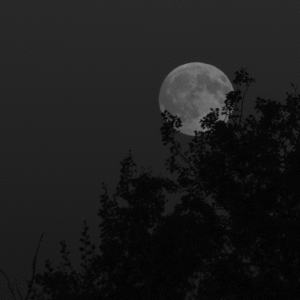My inner nerd can’t wait for Jan. 31
Posted on January 12, 2018 by Maple Creek
Dominique Liboiron
Geek, nerd, special – these words describe people who are a bit too enthusiastic when it comes to stuff they find interesting. My inner-nerd loves nature. That’s why I can’t wait for the early morning of Jan. 31 – there’s going to be a total lunar eclipse. I’m super excited!
Honestly, I’ve had this upcoming eclipse written on my calendar since February of 2017. That’s when the last lunar eclipse took place and I wanted to be sure not to miss the next one. By now, I have no doubt you’re thinking, ‘Wow, this guy really is a nerd.’ Don’t worry, I won’t take it personally.
I’m looking forward to taking pictures of the eclipse, as I’m sure some of you are, too. One word of caution if you plan to photograph the eclipse; if the weather is warm you shouldn’t have any problems, but if it gets cold like it was over Christmas and New Year’s be careful when you take your camera out of a warm vehicle. I learned that lesson the hard way.
In about 2011 or 2012, I drove out of town to watch a lunar eclipse. It was fairly cold outside, about -25, and I had the heater on. My camera got warm. When I stepped outside the truck to take pictures of the Moon, the temperature difference was too much and the frigid air shattered the camera’s display screen. I couldn’t get it fixed and had to throw my camera away.
The Jan. 31 eclipse will begin at 4:51 a.m. Look for the Moon in the western part of the sky about 35 degrees above the horizon. At that point, only the Earth’s outer shadow will be visible on the Moon’s surface.
The Moon will start to change colour around 5:48 a.m. as it moves lower in the sky. Watch for the total eclipse between 6:51 a.m. and 8:07 a.m. The Moon will be close to the horizon. The eclipse’s peak is set for 7:29 a.m.
Unfortunately, we won’t see the entire eclipse from start to finish. The Moon will set at 8:59 a.m. and the eclipse ends at 10:08 a.m. That means the Moon will be below the horizon as it moves completely out of the Earth’s shadow. Nevertheless, we’ll get to see the best part, which is when the Moon is fully eclipsed and colourful.
Because the Moon will be low in the sky, the best way to view this celestial event will be from a place that isn’t obstructed by trees or hills.
Eclipses occur when the Sun, Earth and Moon form a line. The Sun illuminates one side of our planet and causes a shadow behind the other. The Moon moves through this shadow as it orbits the Earth and changes colour.
Although the Moon is hidden by the Earth’s shadow, it’s still partially illuminated by refracted light. As this light passes through the Earth’s atmosphere, most of the blue and white are filtered out. The remaining red is most visible, but other colours can include orange, brown and dark grey.
The colouring of the Moon during an eclipse depends on clouds and impurities in the Earth’s atmosphere such as dust and ash from volcanoes. These factors make it hard to predict the colour beforehand, but they explain why eclipses change colour from year to year. Generally speaking, more impurities will cause a darker red.
Unlike the solar eclipse that took place Aug. 21, it’s safe to watch a lunar eclipse with the naked eye and no protective lenses or filters are needed. A telescope or binoculars will make the viewing experience more spectacular.
If you missed the solar eclipse this summer, we’ll be able to see a partial one Apr. 8, 2024. Otherwise, the next total solar eclipse visible from Saskatchewan isn’t until the summer of 2044. Thankfully, Justin Trudeau won’t be in power at that time.
If it’s cloudy on the last day of the month or if you forget about the upcoming lunar eclipse, the next one will take place Jan. 20, 2019. If you’re a nerd like me, you’ve already written the date on your calendar.
NEWS PHOTO DOMINIQUE LIBOIRON
We’re in for a treat Jan. 31. Not only does that date mark the second full moon of the month, a phenomenon known as a blue moon, but we’ll also witness a total lunar eclipse. The eclipse will begin at 4:51 a.m. and the moon will start to change colour around 5:48 a.m. Watch for the total eclipse between 6:51 a.m. and 8:07 a.m. It will take place slightly above the horizon in the western part of the sky.



Leave a Reply
You must be logged in to post a comment.